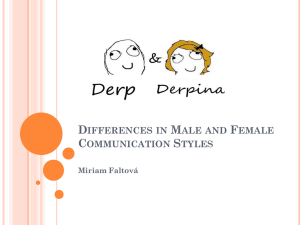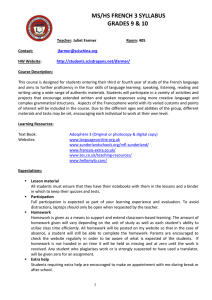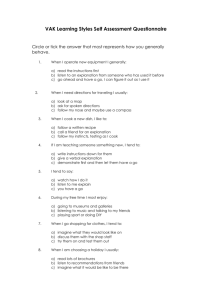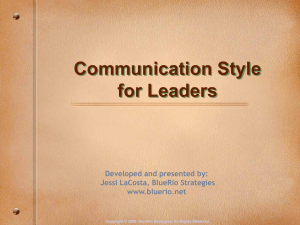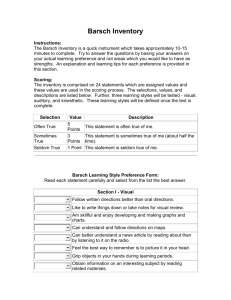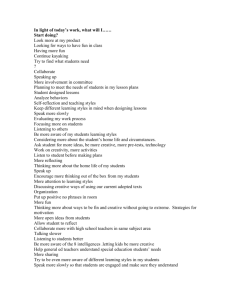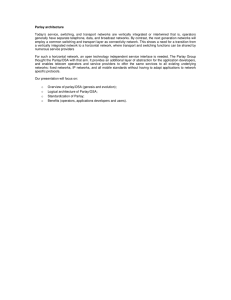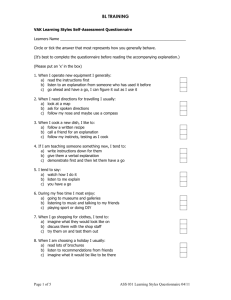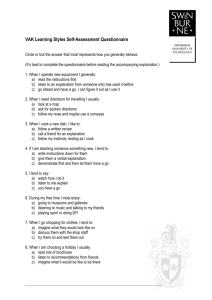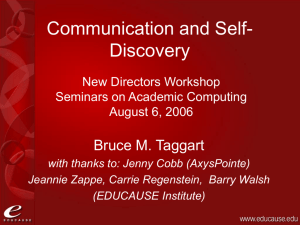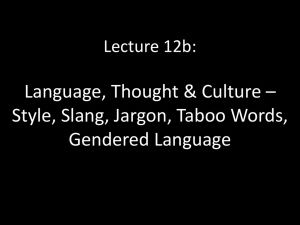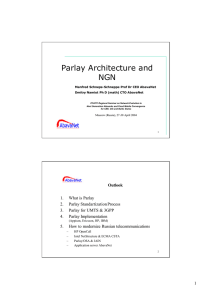YOUR COMMUNICATION STYLE: ASSET OR LIABILITY
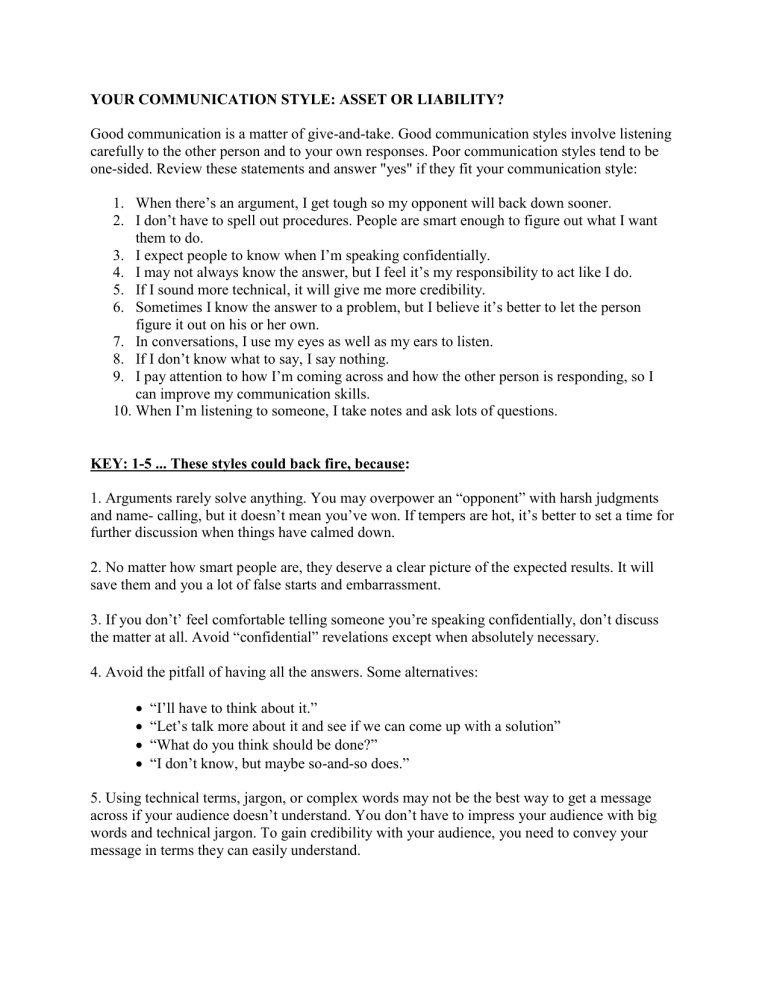
YOUR COMMUNICATION STYLE: ASSET OR LIABILITY?
Good communication is a matter of give-and-take. Good communication styles involve listening carefully to the other person and to your own responses. Poor communication styles tend to be one-sided. Review these statements and answer "yes" if they fit your communication style:
1.
When there’s an argument, I get tough so my opponent will back down sooner.
2.
I don’t have to spell out procedures. People are smart enough to figure out what I want them to do.
3.
I expect people to know when I’m speaking confidentially.
4.
I may not always know the answer, but I feel it’s my responsibility to act like I do.
5.
If I sound more technical, it will give me more credibility.
6.
Sometimes I know the answer to a problem, but I believe it’s better to let the person figure it out on his or her own.
7.
In conversations, I use my eyes as well as my ears to listen.
8.
If I don’t know what to say, I say nothing.
9.
I pay attention to how I’m coming across and how the other person is responding, so I can improve my communication skills.
10.
When I’m listening to someone, I take notes and ask lots of questions.
KEY: 1-5 ... These styles could back fire, because:
1. Arguments rarely solve anything. You may overpower an “opponent” with harsh judgments and name- calling, but it doesn’t mean you’ve won. If tempers are hot, it’s better to set a time for further discussion when things have calmed down.
2. No matter how smart people are, they deserve a clear picture of the expected results. It will save them and you a lot of false starts and embarrassment.
3. If you don’t’ feel comfortable telling someone you’re speaking confidentially, don’t discuss the matter at all. Avoid “confidential” revelations except when absolutely necessary.
4. Avoid the pitfall of having all the answers. Some alternatives:
“I’ll have to think about it.”
“Let’s talk more about it and see if we can come up with a solution”
“What do you think should be done?”
“I don’t know, but maybe so-and-so does.”
5. Using technical terms, jargon, or complex words may not be the best way to get a message across if your audience doesn’t understand. You don’t have to impress your audience with big words and technical jargon. To gain credibility with your audience, you need to convey your message in terms they can easily understand.
KEY: 6-10 ... These are good communication styles, because:
6. Unless it’s a simple procedural question, giving people a chance to draw their own conclusions sometimes helps them grow, and they’ll be more likely to follow up on answers they find for themselves. There’s often more than one right answer anyway.
7. Body language, tone of voice, and phrasing say things that words don’t say. A pleased expression and confident stance may tell you there’s full agreement. A pained expression, a discouraged slump, or nervous fidgeting can be an invitation to probe.
8. Saying nothing gives you a chance to think about the problem and how you want to respond to it. You don’t always have to jump in immediately with a plan or solution.
9. No one is born with perfect communication skills. Be on the lookout for things you’d like to improve, whether it’s too many “ya knows” or getting too many puzzled looks from the people you’re talking to. If your communication is frequently misinterpreted, work on explaining more clearly and getting people to explain to you what they think you said.
10. Taking notes can help you remember what was said and help you organize it. Asking questions is a good way to clarify meaning and to let the speaker know you’re listening and you understand.
( Reference: Parlay International, Adapted from "Your Communication Style," Copyright Parlay International,
Emeryville, CA. Distributed under licensing agreement to BYU-Idaho employees.)
